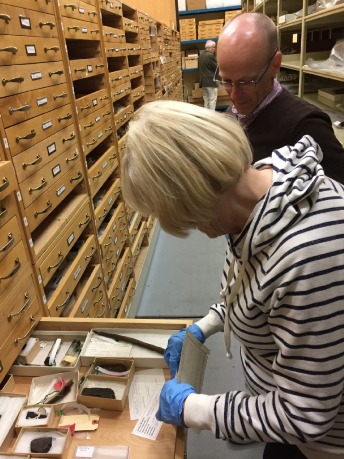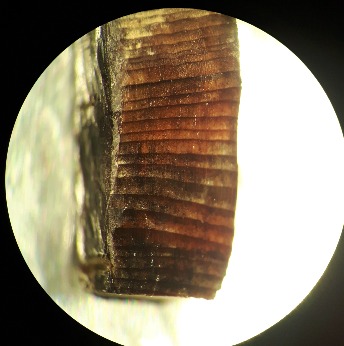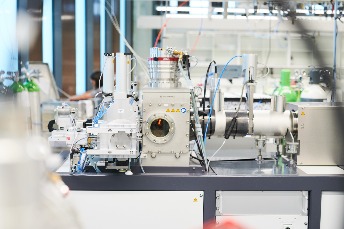It was 1000 Years Ago Today...Or at Least This Year

In October 2018, I flew from the Netherlands to Canada, thinking of the Viking longships that once defied the ocean waves below me. These vessels carried bands of Vikings (or Norse) most likely from western Greenland. When they rowed their boats ashore, they were not only the first Europeans to set foot on the American continent (centuries before Columbus), they were also the first humans ever to cross the Atlantic.
The big question for our team was when did the Norse achieve this historic milestone?
L’Anse aux Meadows National Historic Site
The Norse built a dwelling complex on the coast of Newfoundland, the remains of which have been excavated by archaeologists since the 1960s. It consisted of three large halls and a number of smaller buildings, one of which was a metallurgical workshop. Reconstructions of these types of structures can be visited at L’Anse aux Meadows National Historic Site (figure 1). The frames of the buildings were built of timber and the walls and rooves of turf. In the Viking Age, trees grew abundantly in the vicinity of L’Anse aux Meadows. Indeed, numerous wooden remains have been excavated and stored at a Parks Canada facility in Dartmouth (Nova Scotia).
Associate Professor Michael Dee suspected such wooden remains might provide the key to determining when the Norse inhabited the site. The received chronological paradigm, mainly based on interpretations of the Icelandic Sagas (oral histories that were first written down in the 13th century), was that the Norse established the settlement at the close of the first millennium. Therefore, wood from the site possibly contained the unique spike in radiocarbon concentrations caused by the solar storm in 992 CE. We realised that if we could detect this signal in a tree chopped down by the Norse, it might be possible to date this activity to the exact year.
Initially, we had no idea whether any of the items of material would be suitable for our investigation. However, at the storage facility I discovered that many were in perfect condition, almost as if they had been collected yesterday. Dr Birgitta Wallace, Charles Lindsay and Kevin Jenkins kindly guided me through the facility (figure 2). We only selected samples that were unmistakably related to Norse activity. That is, they all came from the archaeological layer attributed to the Norse, and they all exhibited clear cut marks made by blades of metal - a material not produced by the Indigenous population. Furthermore, it was crucial that the wood items contained clear, distinct growth rings including their very outermost ring, the so-called waney edge.

Where is the Signal?
Back in the Netherlands, at the Centre for Isotope Research of the University of Groningen, our search began for the anomalous change in radiocarbon concentrations between the years 992 and 993 CE . First, we separated the individual growth-rings using a microscope, a surgical scalpel and even razor blades. Splitting the rings was challenging, since they were minuscule because of the short growing season in the region of L’Anse aux Meadows (figure 3). Next, the cellulose fraction was chemically isolated from each growth ring in the laboratory. Finally, the radiocarbon concentration of these fractions was determined using accelerator mass spectrometry (figure 4).

More than once, we doubted whether we would find the 993 CE signal. In all three wood items, the signal was not visible in the outermost 20 growth rings. This either meant that the trees died before the year 993 CE, and hence did not show the signal at all, or it meant that the signal was simply not detectable in this wood (the 993 CE spike is considerable smaller than the 775 spike CE we had used previously for exact dating. But we decided to persevere and measure samples from deeper within the wood items. Once more we were fortunately given permission by Parks Canada to take new samples.

The Parcel Debacle
By this point, the COVID-19 pandemic had hit hard, Newfoundland was in complete lockdown, and it was impossible for us to make another visit to the storage facility. Kevin Jenkins, who oversees the collections, kindly took the new samples for us, and they were subsequently picked up by a courier company. However, a few weeks later we were informed that the company had lost the parcel on its way to Groningen! Instead of chancing our luck with another delivery during the pandemic, Kevin took some replacement samples and we decided to have them hand-carried by a commercial pilot (a friend of Birgitta Wallace) to London, where they would be collected by Michael Dee. But on the day that Michael booked to go from Groningen to London, the original parcel, which had been deemed ‘lost’ months earlier, suddenly appeared at our facility!
Let's just say that it made the euphoria all the greater when we finally - after another few weeks of splitting rings and laboratory work - saw the long-anticipated spikes appear on our computer screens. Indeed, the set of results we got was almost too good to be true! The chopping date of all three wood items (from three different trees) turned out to be exactly the year 1021 CE. What are the odds? Just in time to mark the 1000-year anniversary of European activity in the Americas (figure 5: the whole story in animation).
About the author

Link: /staff/m.kuitems/

